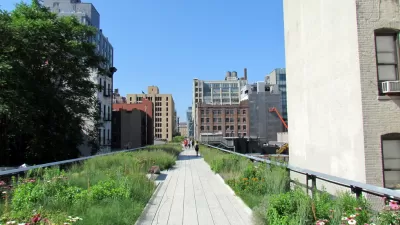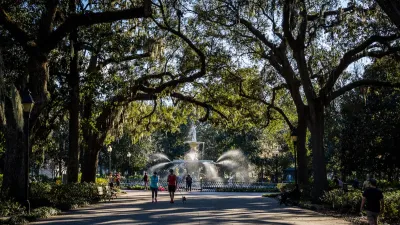This piece from The Chronicle of Higher Education looks at the role design plays in encouraging interaction amongst academics and calls out for better planning.
"Over the past decade, we've heard a great deal about the benefits of interdisciplinary collaboration on college campuses. Institutional policies now reward the 'teaming' of formerly isolated disciplines in both teaching and research. Medical education, for example, increasingly includes courses in the humanities, and behavioral, social, and physical scientists increasingly work together in public-health research. In response, planners and designers have been asked to develop buildings that encourage interaction."
"[R]eal interaction occurs in public spaces designed to support specific functions, not in spaces designed simply as generic gathering areas. Another impediment to interdisciplinary collaboration is the politics of space. In some respects, you might say that the politics of space is embedded in the traditional culture of academe-the more space you have, the more important you and/or your department are."
"Even in colleges that are committed to sustainable design (where you might think wasteful space would be anathema), you find faculty members with multiple offices; research labs that are used for storage; and classrooms that remain underutilized for entire semesters. Frequently this phenomenon is perpetuated by hard boundaries between academic units. Wouldn't rethinking how space is allocated allow us to use it more efficiently and effectively?"
FULL STORY: Mary Jo Olenick: Can Less Space Be More?

Study: Maui’s Plan to Convert Vacation Rentals to Long-Term Housing Could Cause Nearly $1 Billion Economic Loss
The plan would reduce visitor accommodation by 25,% resulting in 1,900 jobs lost.

Placekeeping: Setting a New Precedent for City Planners
How a preservation-based approach to redevelopment and urban design can prevent displacement and honor legacy communities.

Using Old Oil and Gas Wells for Green Energy Storage
Penn State researchers have found that repurposing abandoned oil and gas wells for geothermal-assisted compressed-air energy storage can boost efficiency, reduce environmental risks, and support clean energy and job transitions.

Washington State Plans Ambitious ‘Cycle Highway’ Network
The state is directing funding to close gaps in its existing bike network and make long-distance trips more accessible.

Homeowners Blame PG&E for Delays in ADU Permits
The utility says it has dramatically reduced its backlog, but applicants say they still face months-long delays for approvals for new electrical work.

Rethinking Wildfire Defense: How a Landscape Approach Can Protect Neighborhoods
Post-fire analysis of the Eaton Fire reveals that a landscape approach — including fire-resistant vegetation, home hardening, and strategic planning — can help reduce wildfire risk, challenging assumptions that trees and plants are primary fire hazards.
Urban Design for Planners 1: Software Tools
This six-course series explores essential urban design concepts using open source software and equips planners with the tools they need to participate fully in the urban design process.
Planning for Universal Design
Learn the tools for implementing Universal Design in planning regulations.
Borough of Carlisle
Caltrans
Heyer Gruel & Associates PA
Institute for Housing and Urban Development Studies (IHS)
City of Grandview
Harvard GSD Executive Education
Salt Lake City
NYU Wagner Graduate School of Public Service
City of Cambridge, Maryland





























